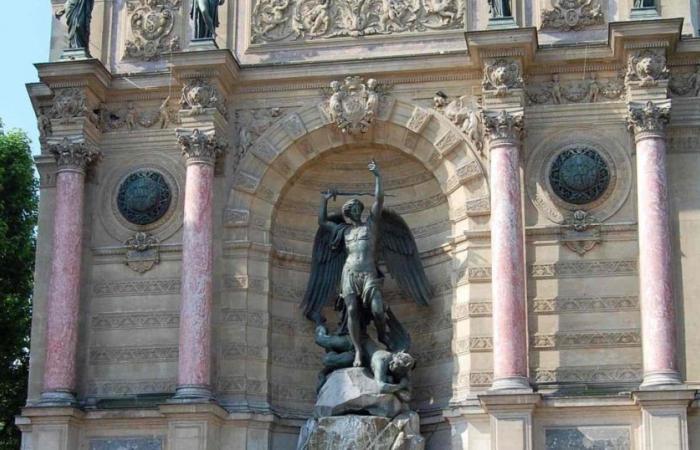
- The Saint-Michel Fountain in Paris
Photo : Pline (CC BY-SA 3.0)
-
See the image on his page
The system is perverse and we have denounced it many times (see the articles): advertising on historical monuments, usually prohibited, was authorized in 2007 on the condition that it is placed on scaffolding hiding a restoration site, and that all revenues generated are allocated to this work.
But this violation of the law is even more vicious than we thought, and this is an article published in The Parisian on September 29 which alerted us. We read there that the elected officials “ have a smile » because the City of Paris sold for a record price – at least 5.24 million euros – advertising for ten months, on the Fontaine Saint-Michel which will be restored at a cost of 2.5 million euros. Or a net profit of 2.74 million euros “ at least ».
From next March to January 2026, the banks of the Seine, a world heritage site, will once again be polluted by gigantic advertising for a smartphone or pairs of sneakers!
The heritage code is clear: “ The revenue received by the owner of the monument for this display is allocated by the project owner to finance the work. » This is also the wording that appears below the advertisements: “ Revenues from this advertising contribute to the restoration of this monument. »
But if the money must be allocated to restoration, what happens when, as here, the amount brought in by restoration is greater?
We didn’t know it but the answer can be found in the regulatory part of the heritage code, article R621-91: ” If the total billboard revenue collected is greater than the amount of the work, this excess is taken into account when examining requests for subsidies for subsequent work on the same building. »
In other words, when the City of Paris restores the Saint-Michel fountain again, the amount of subsidies will take into account the fact that money has already been collected thanks to advertising.
This is simply mind-boggling. If the restoration of the Saint-Michel fountain is well done (in particular thanks to the COARC [1]responsible for the sculptures), the next restoration should not take place for twenty or thirty years. This money collected immediately will obviously not be put into a blocked account to carry out hypothetical work in several decades: it will be used as soon as possible, which obviously explains why the elected officials have “ the smile ».
We interviewed Karen Taieb, the heritage assistant for the City of Paris. This, which questioned the legal department, confirmed to us that “ the rules indicate that excess amounts can be used later for the restoration of the same building », thus confirming what we have just written.
She adds: “ it nevertheless seems possible to use it for an object of the same nature and in the same district. The excess amount could thus be directed towards the restoration of the Saint-Sulpice Fountain located in the same district and whose restoration is planned in the near future. But this option has not yet been decided at this stage ».
We trust Karen Taieb, who regularly fights for Parisian heritage. But apart from the fact that nothing in the legal texts requires that this additional money be used for other restorations, even “ in the same district » and for a “ object of the same nature » (hence a fountain), the fact that this has not yet been decided is worrying. The City can indeed use it as it sees fit and it will remain legal. And if it were decided to allocate these 2.74 million to the Saint-Sulpice fountain, this money would only replace what the City had planned to spend on this monument since its restoration has already been announced (since 2022, it is true)…
The condition that advertising revenue be allocated to the restoration of the monument is, if we think about it carefully, absurd in any case: either the amount collected is lower, and the municipality allocates in fact directly or indirectly, this money goes to the work, or the amount collected is higher, and this money will not go to this monument. And if – as is likely – the enormous gain made by the City on this restoration actually ends up in its coffers to finance anything else, this will mean that advertising is now authorized on historic monuments without even benefiting them.
It is urgent to abolish, once and for all, this unhealthy system of advertising on historical monuments, decided by Renaud Donnedieu de Vabres when he was Minister of Culture. And to think about a sustainable and painless way to finance the restoration of heritage in France as we have been suggesting for a long time: percentage on the stakes of the Française des Jeux and tourist tax (see in particular this article).





